Abstract
We measured the delayed type hypersensitivity (DTH) skin test response, along with additional variables of host immunocompetence in 245 preoperative patients to determine which variables are associated with septic-related deaths following operation. Of the 14 deaths (5.7%), 12 were related to sepsis and in 2 sepsis was contributory. The DTH response (p less than 0.00001), age (p less than 0.0002), serum albumin (p less than 0.003), hemoglobin (p less than 0.02), and total hemolytic complement (p less than 0.03), were significantly different between those who died and those who lived. By logistic regression analysis, only the DTH skin test response (log likelihood = 41.7, improvement X2 = 6.24, p less than 0.012) and the serum albumin (log likelihood = 44.8, improvement X2 = 17.7, p less than 0.001) were significantly and independently associated with the deaths. The resultant probability of mortality calculation equation was tested in a separate validation group of 519 patients (mortality = 5%) and yielded a good predictive capability as assessed by (1) X2 = 0.08 between observed and expected deaths, NS; (2) Goodman-Kruskall G statistic = 0.673) Receiver-Operating-Characteristic (ROC) curve analysis with an area under the ROC curve, Az = 0.79 +/- 0.05. We conclude that a reduced immune response (DTH skin test anergy) plus a nutritional deficit and/or acute-phase response change are both associated with increased septic-related deaths in elective surgical patients.
Full text
PDF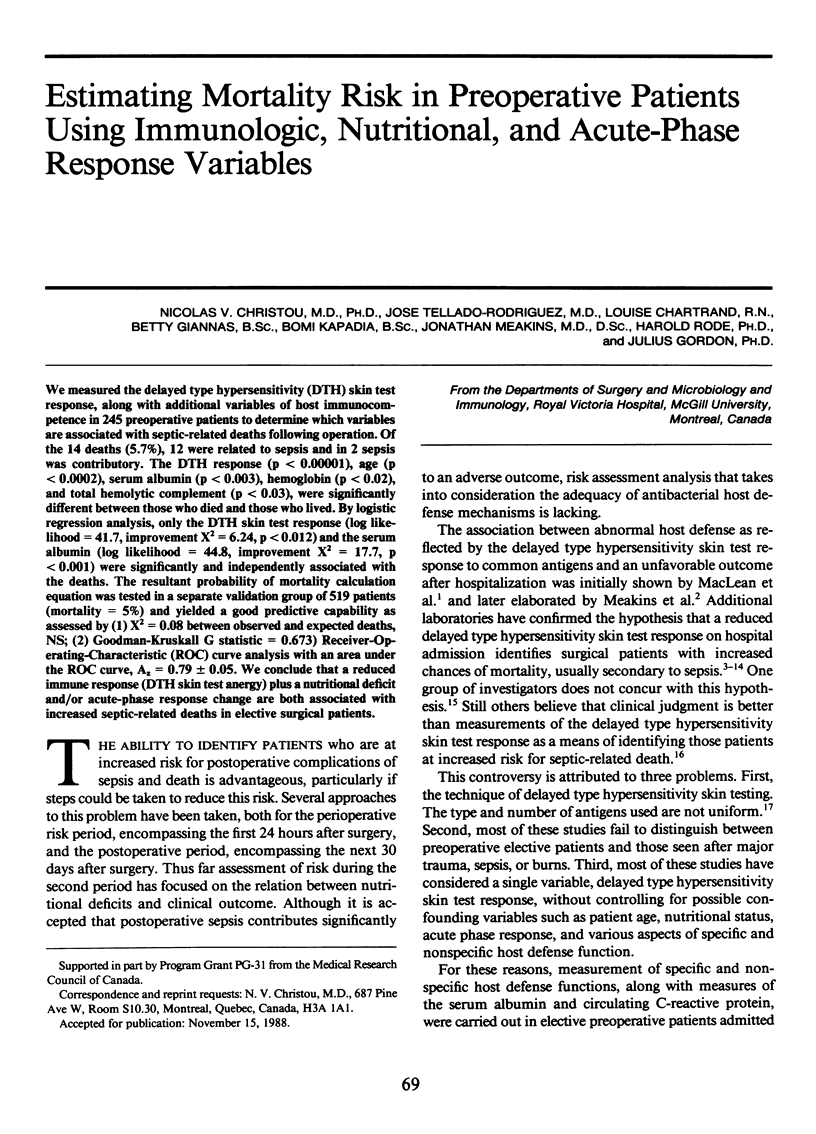
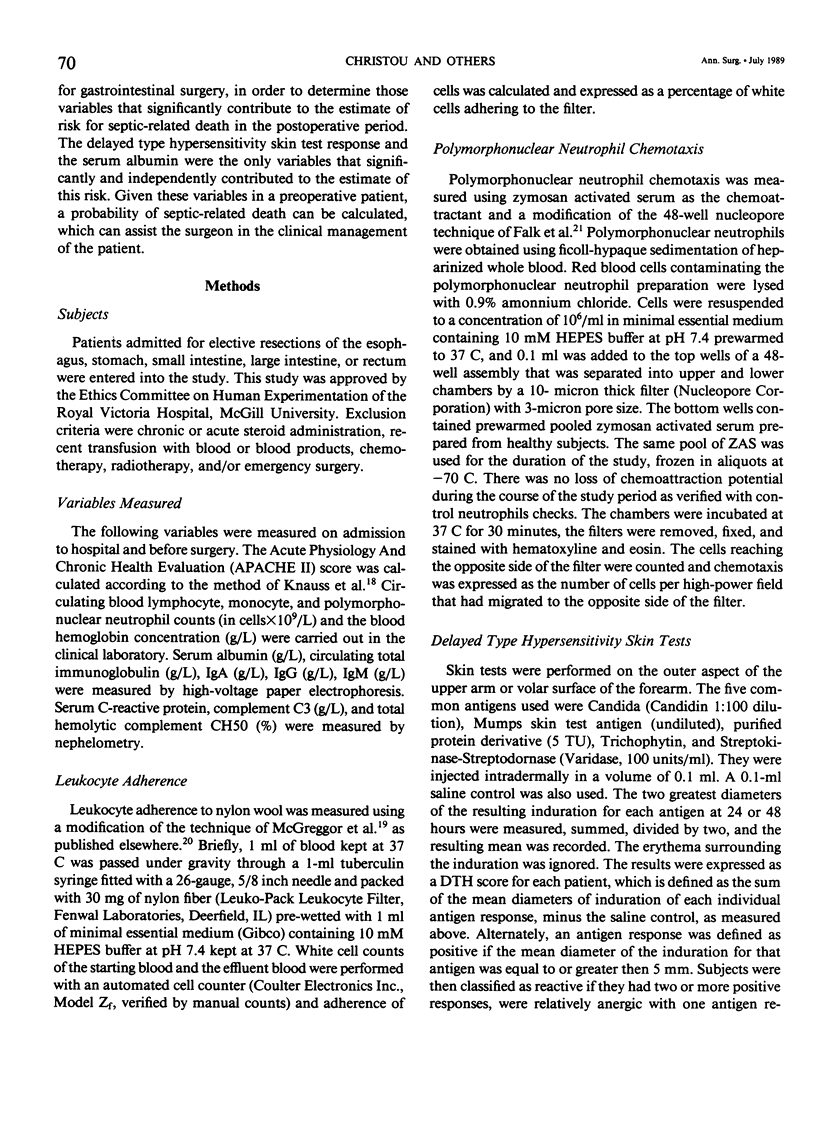
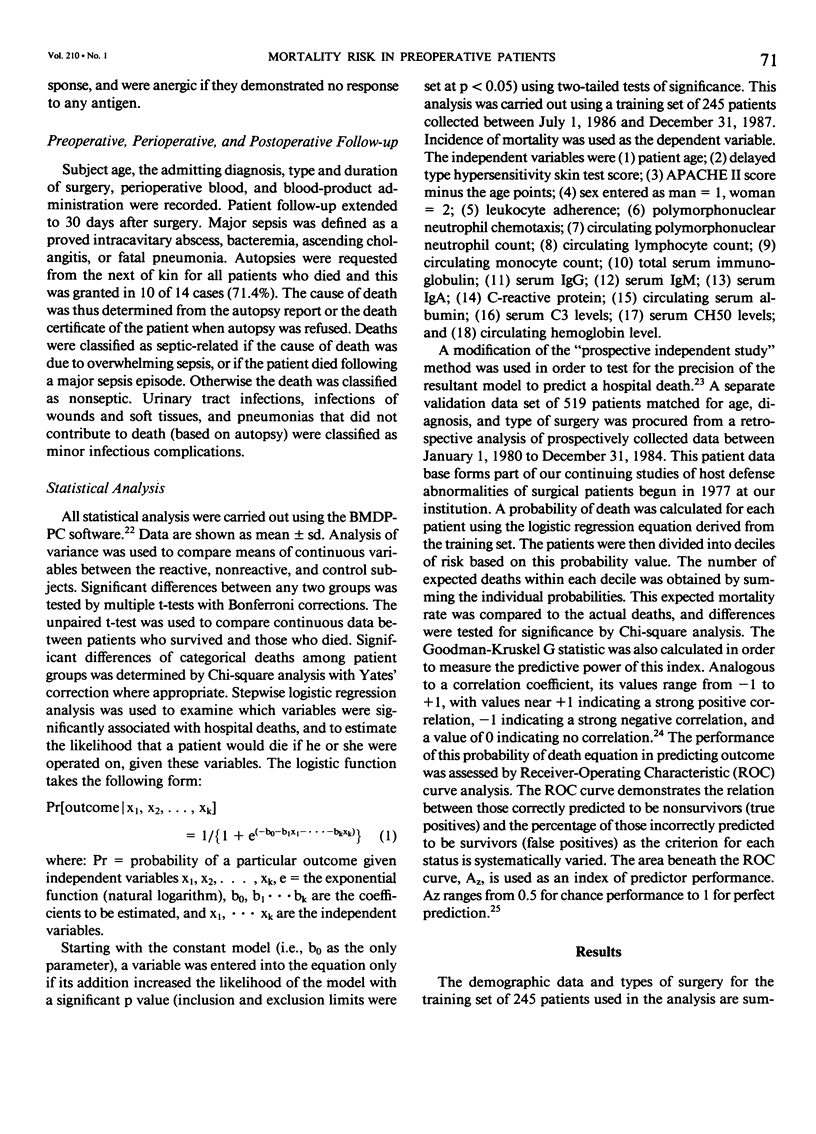
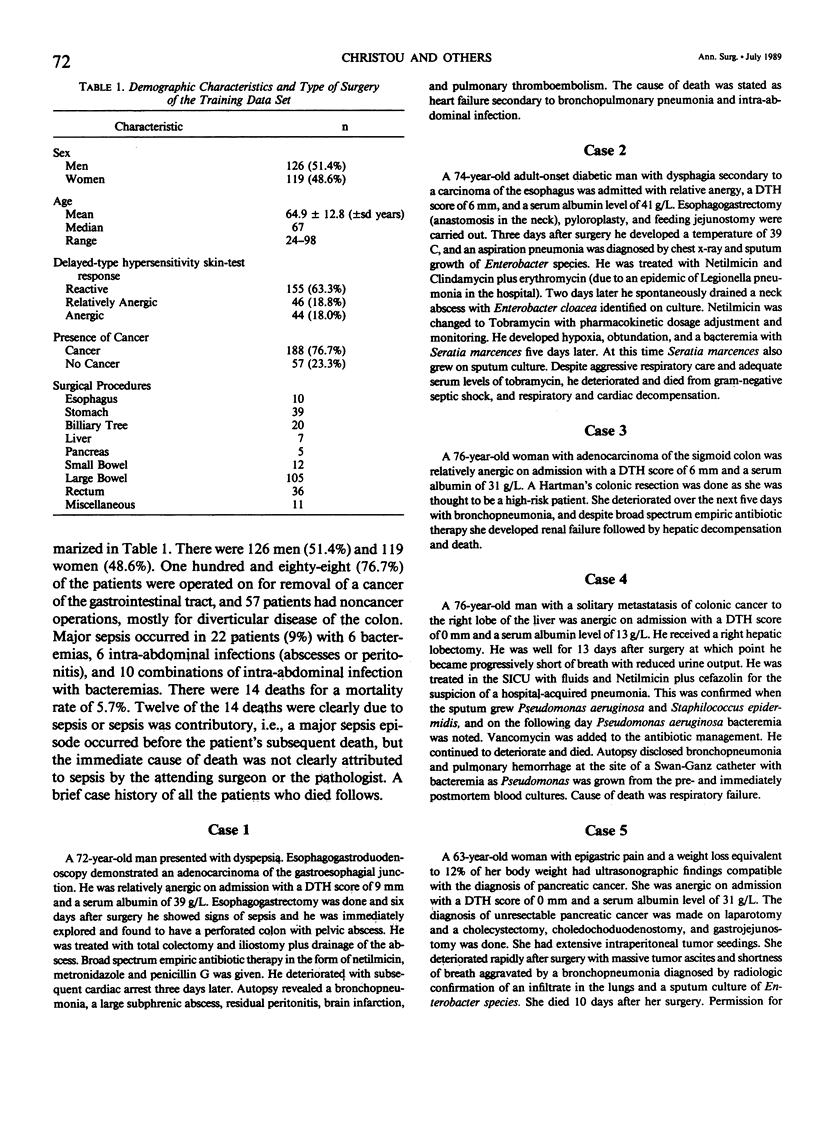
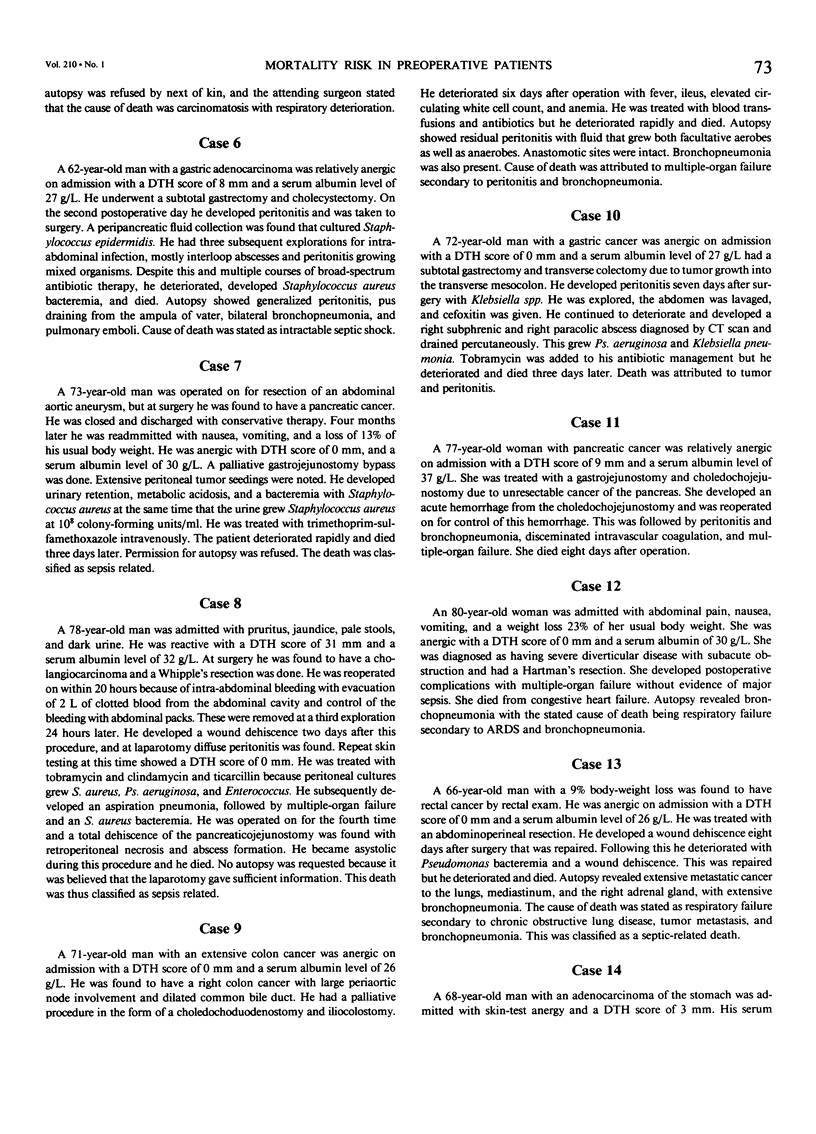
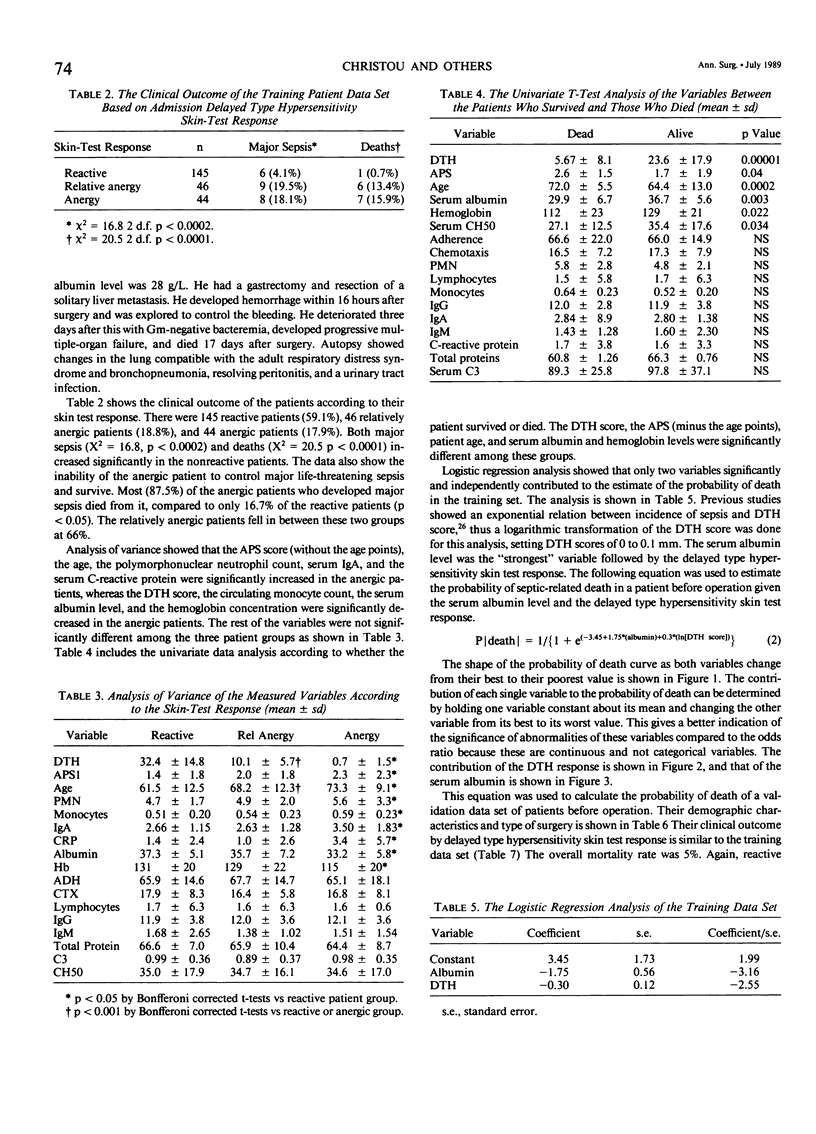
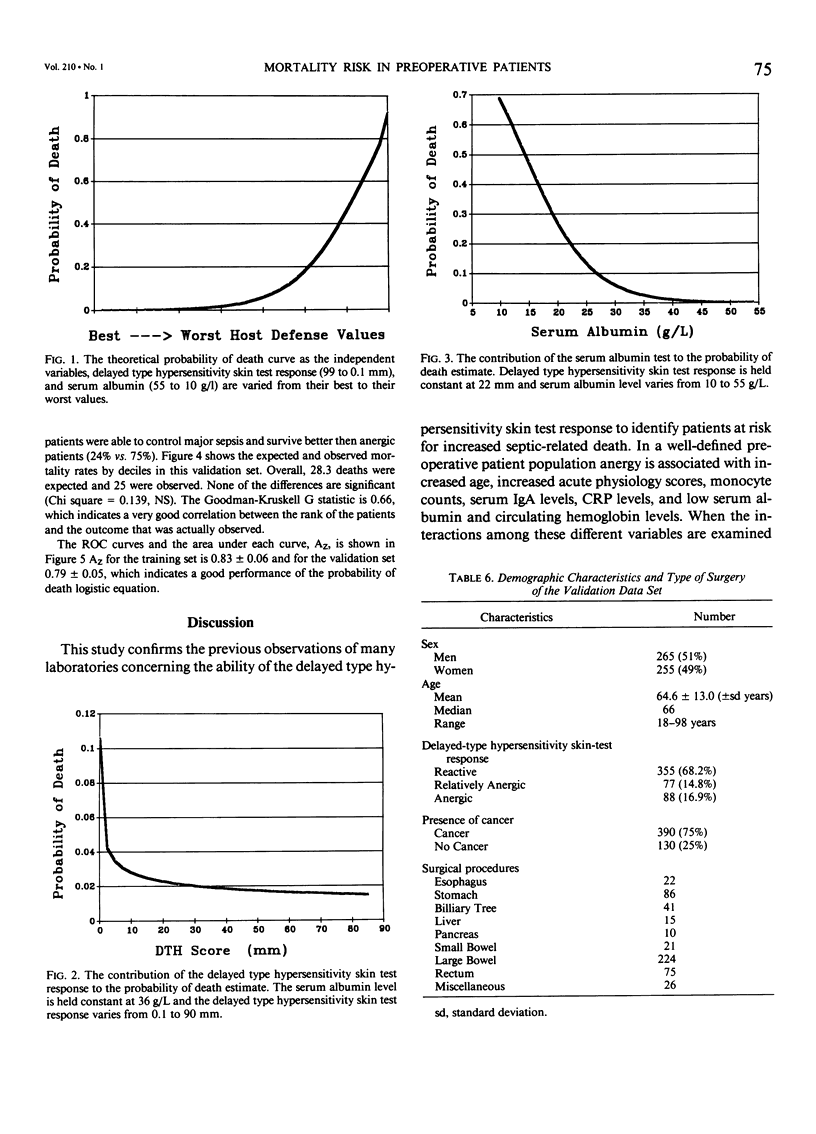
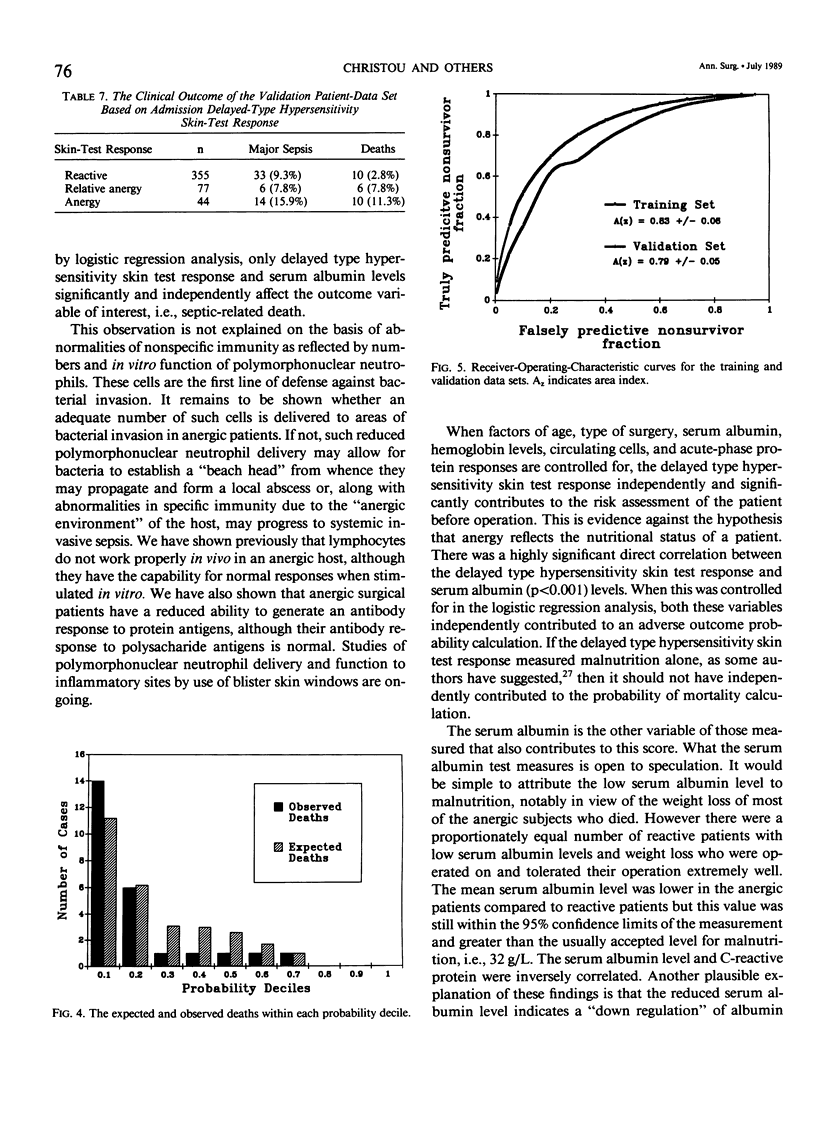
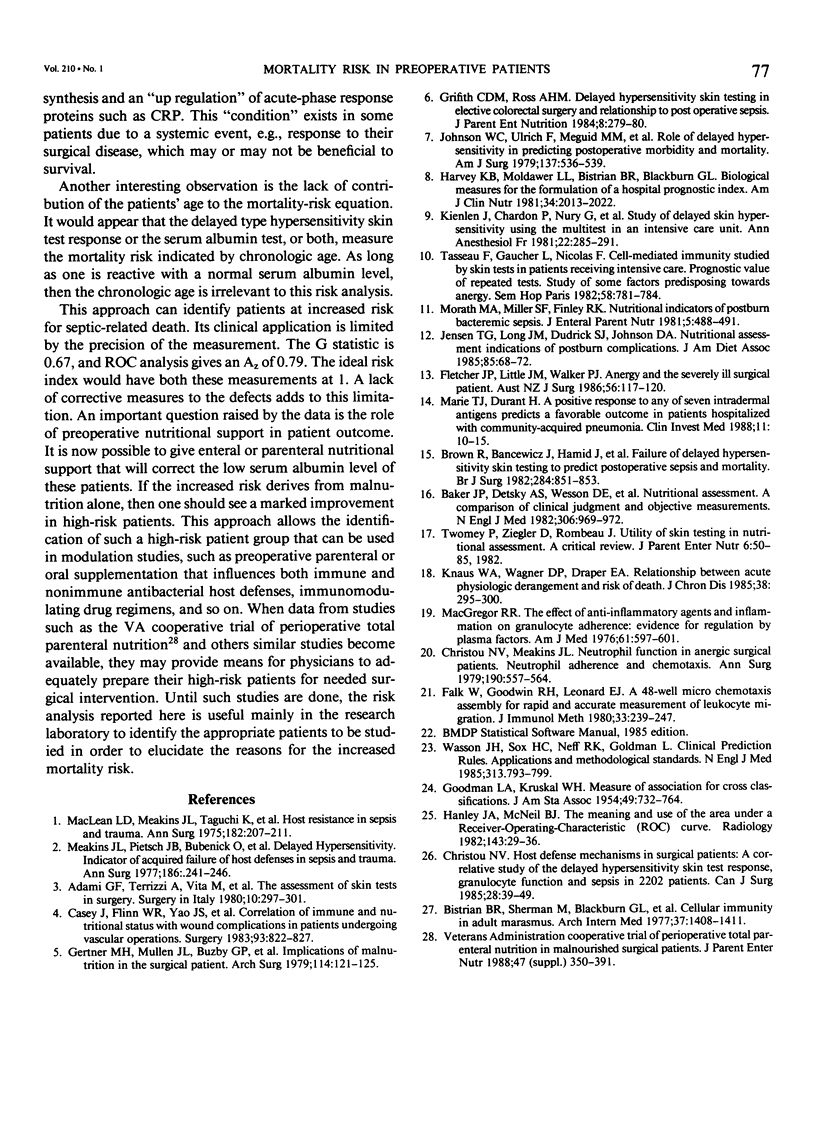
Selected References
These references are in PubMed. This may not be the complete list of references from this article.
- Baker J. P., Detsky A. S., Wesson D. E., Wolman S. L., Stewart S., Whitewell J., Langer B., Jeejeebhoy K. N. Nutritional assessment: a comparison of clinical judgement and objective measurements. N Engl J Med. 1982 Apr 22;306(16):969–972. doi: 10.1056/NEJM198204223061606. [DOI] [PubMed] [Google Scholar]
- Bistrian B. R., Sherman M., Blackburn G. L., Marshall R., Shaw C. Cellular immunity in adult marasmus. Arch Intern Med. 1977 Oct;137(10):1408–1411. [PubMed] [Google Scholar]
- Brown R., Bancewicz J., Hamid J., Patel N. J., Ward C. A., Farrand R. J., Pumphrey R. S., Irving M. Failure of delayed hypersensitivity skin testing to predict postoperative sepsis and mortality. Br Med J (Clin Res Ed) 1982 Mar 20;284(6319):851–853. doi: 10.1136/bmj.284.6319.851. [DOI] [PMC free article] [PubMed] [Google Scholar]
- Casey J., Flinn W. R., Yao J. S., Fahey V., Pawlowski J., Bergan J. J. Correlation of immune and nutritional status with wound complications in patients undergoing vascular operations. Surgery. 1983 Jun;93(6):822–827. [PubMed] [Google Scholar]
- Christou N. V. Host-defence mechanisms in surgical patients: a correlative study of the delayed hypersensitivity skin-test response, granulocyte function and sepsis. Can J Surg. 1985 Jan;28(1):39-46, 49. [PubMed] [Google Scholar]
- Christou N. V., Meakins J. L. Neutrophil function in anergic surgical patients: neutrophil adherence and chemotaxis. Ann Surg. 1979 Nov;190(5):557–564. doi: 10.1097/00000658-197911000-00001. [DOI] [PMC free article] [PubMed] [Google Scholar]
- Falk W., Goodwin R. H., Jr, Leonard E. J. A 48-well micro chemotaxis assembly for rapid and accurate measurement of leukocyte migration. J Immunol Methods. 1980;33(3):239–247. doi: 10.1016/0022-1759(80)90211-2. [DOI] [PubMed] [Google Scholar]
- Fletcher J. P., Little J. M., Walker P. J. Anergy and the severely ill surgical patient. Aust N Z J Surg. 1986 Feb;56(2):117–120. doi: 10.1111/j.1445-2197.1986.tb01866.x. [DOI] [PubMed] [Google Scholar]
- Hanley J. A., McNeil B. J. The meaning and use of the area under a receiver operating characteristic (ROC) curve. Radiology. 1982 Apr;143(1):29–36. doi: 10.1148/radiology.143.1.7063747. [DOI] [PubMed] [Google Scholar]
- Harvey K. B., Moldawer L. L., Bistrian B. R., Blackburn G. L. Biological measures for the formulation of a hospital prognostic index. Am J Clin Nutr. 1981 Oct;34(10):2013–2022. doi: 10.1093/ajcn/34.10.2013. [DOI] [PubMed] [Google Scholar]
- Jensen T. G., Long J. M., 3rd, Dudrick S. J., Johnston D. A. Nutritional assessment indications of postburn complications. J Am Diet Assoc. 1985 Jan;85(1):68–72. [PubMed] [Google Scholar]
- Johnson W. C., Ulrich F., Mequid M. M., Lepak N., Bowe P., Harris P., Alberts L. H., Nabseth D. C. Role of delayed hypersensitivity in predicting postoperative morbidity and mortality. Am J Surg. 1979 Apr;137(4):536–542. doi: 10.1016/0002-9610(79)90127-2. [DOI] [PubMed] [Google Scholar]
- Kienlen J., Chardon P., Nury G., Lubrano J. F., Messmer J. C., du Cailar J. Etude de l'hypersensibilité cutanée retardée par le multitest chez une population de réanimation polyvalente. Ann Anesthesiol Fr. 1981;22(3):285–291. [PubMed] [Google Scholar]
- Knaus W. A., Wagner D. P., Draper E. A. Relationship between acute physiologic derangement and risk of death. J Chronic Dis. 1985;38(4):295–300. doi: 10.1016/0021-9681(85)90075-x. [DOI] [PubMed] [Google Scholar]
- MacGregor R. R. The effect of anti-inflammatory agents and inflammation on granulocyte adherence. Evidence for regulation by plasma factors. Am J Med. 1976 Nov;61(5):597–607. doi: 10.1016/0002-9343(76)90137-6. [DOI] [PubMed] [Google Scholar]
- MacLean L. D., Meakins J. L., Taguchi K., Duignan J. P., Dhillon K. S., Gordon J. Host resistance in sepsis and trauma. Ann Surg. 1975 Sep;182(3):207–217. doi: 10.1097/00000658-197509000-00004. [DOI] [PMC free article] [PubMed] [Google Scholar]
- Marrie T. J., Durant H. A positive response to any of seven intradermal antigens predicts favorable outcome in patients hospitalized with community-acquired pneumonia. Clin Invest Med. 1988 Feb;11(1):10–15. [PubMed] [Google Scholar]
- Meakins J. L., Pietsch J. B., Bubenick O., Kelly R., Rode H., Gordon J., MacLean L. D. Delayed hypersensitivity: indicator of acquired failure of host defenses in sepsis and trauma. Ann Surg. 1977 Sep;186(3):241–250. doi: 10.1097/00000658-197709000-00002. [DOI] [PMC free article] [PubMed] [Google Scholar]
- Mullen J. L., Gertner M. H., Buzby G. P., Goodhart G. L., Rosato E. F. Implications of malnutrition in the surgical patient. Arch Surg. 1979 Feb;114(2):121–125. doi: 10.1001/archsurg.1979.01370260011001. [DOI] [PubMed] [Google Scholar]
- Tasseau F., Gaucher L., Nicolas F. Etude de l'immunité cellulaire par la méthode des tests cutanés en réanimation. Sem Hop. 1982 Apr 1;58(13):781–784. [PubMed] [Google Scholar]
- Wasson J. H., Sox H. C., Neff R. K., Goldman L. Clinical prediction rules. Applications and methodological standards. N Engl J Med. 1985 Sep 26;313(13):793–799. doi: 10.1056/NEJM198509263131306. [DOI] [PubMed] [Google Scholar]


